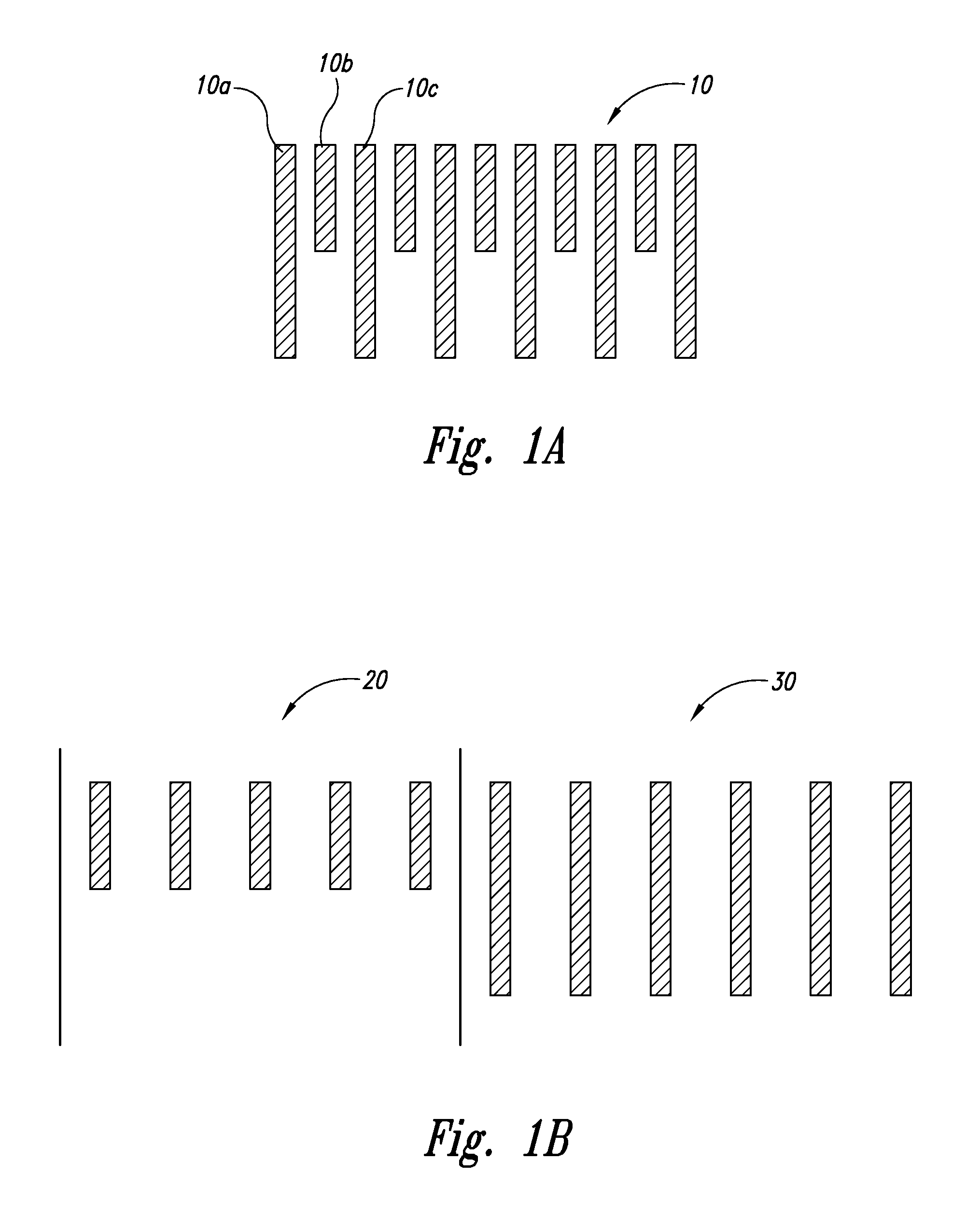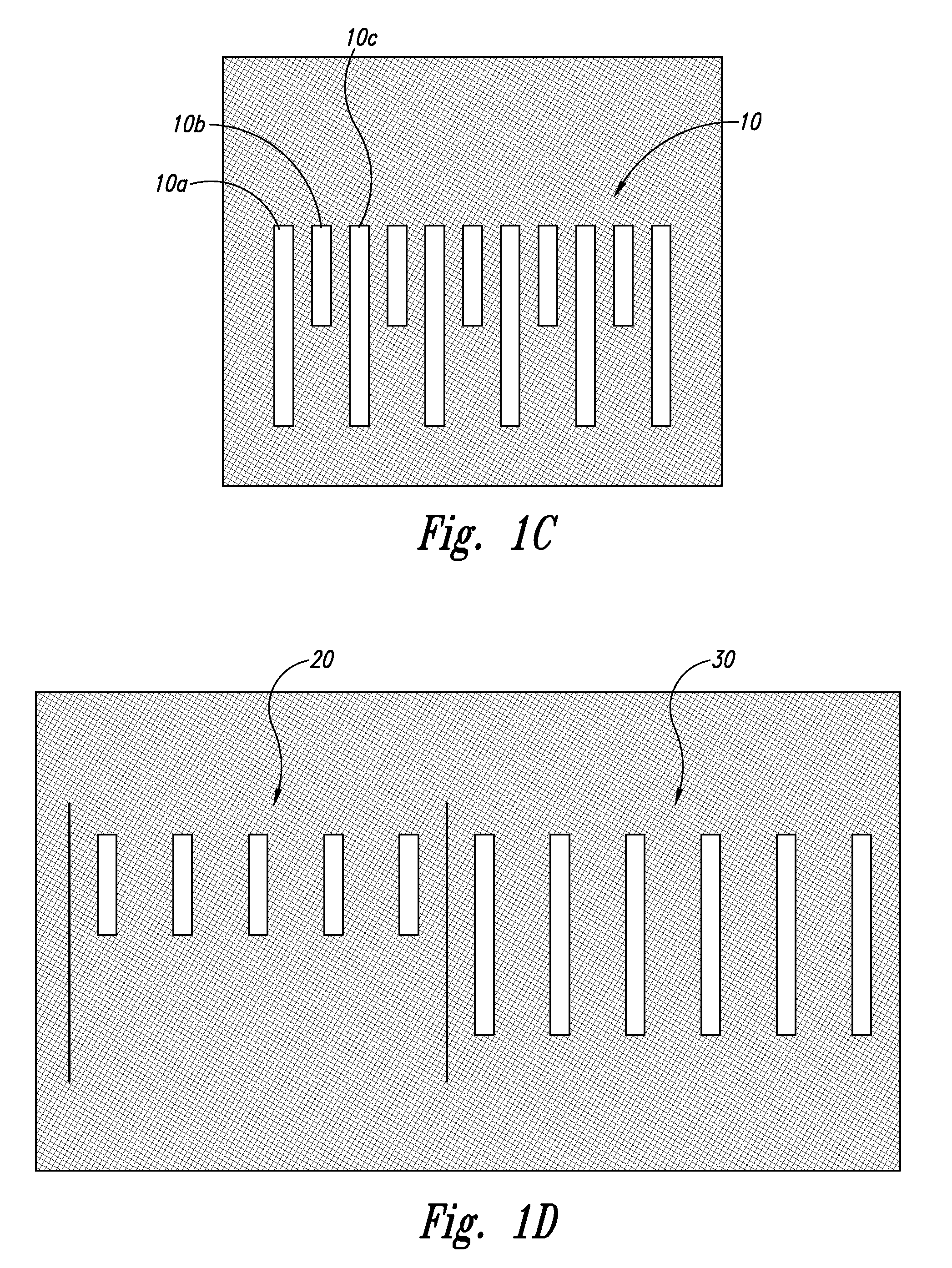Data preparation for multiple mask printing
a technology of data preparation and mask printing, applied in the field of photolithographic processing, can solve the problems of inability of photolithographic printing system to print features on wafers, and the lack of masks contained on them
- Summary
- Abstract
- Description
- Claims
- Application Information
AI Technical Summary
Benefits of technology
Problems solved by technology
Method used
Image
Examples
Embodiment Construction
[0018]FIGS. 1A and 1B illustrate the basic operation of a double patterning photolithographic printing process. A target layout 10 includes a number of features 10a, 10b, 10c, etc., that are to be printed on a semiconductor wafer. The minimum pitch or distance between each feature that can be imaged on a wafer is determined by the resolving ability of the photolithographic printing system. One technique used to print features that are closer together than the photolithographic printing system would normally allow is a double patterning technique.
[0019]With double patterning, the desired pattern of features to be printed on a wafer is divided among two or more masks wherein each mask prints one set of features on the wafer. The masks print sets of features that are interleaved such that the features printed by both masks have a pitch that is closer than that obtainable with a single mask alone. For example, as shown in FIG. 1B, the desired target pattern 10 is divided into a first se...
PUM
 Login to View More
Login to View More Abstract
Description
Claims
Application Information
 Login to View More
Login to View More - R&D
- Intellectual Property
- Life Sciences
- Materials
- Tech Scout
- Unparalleled Data Quality
- Higher Quality Content
- 60% Fewer Hallucinations
Browse by: Latest US Patents, China's latest patents, Technical Efficacy Thesaurus, Application Domain, Technology Topic, Popular Technical Reports.
© 2025 PatSnap. All rights reserved.Legal|Privacy policy|Modern Slavery Act Transparency Statement|Sitemap|About US| Contact US: help@patsnap.com



